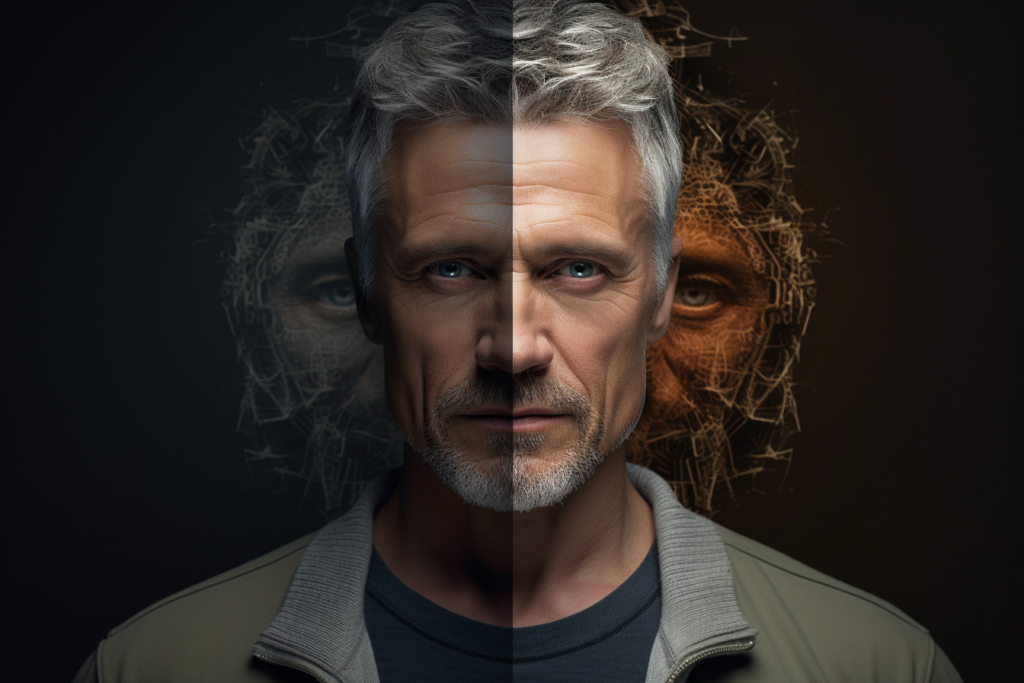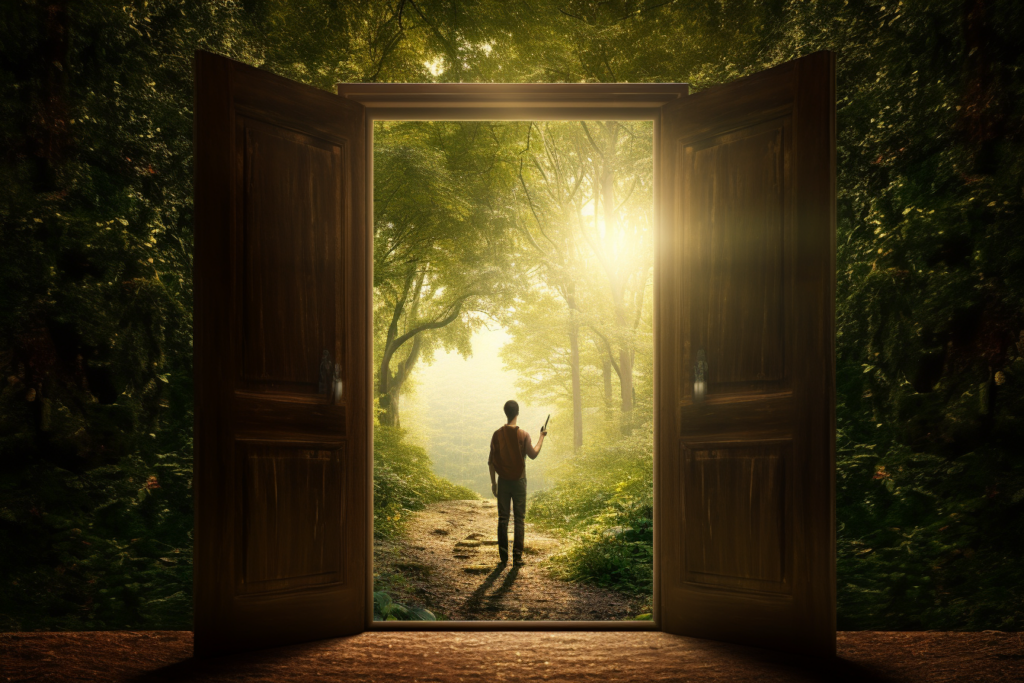About the Author: Alexander Beiner is an author, journalist, and facilitator. He’s the author of The Bigger Picture: How Psychedelics Can Help Us Make Sense of the World which has been hailed as ‘the most important book on psychedelics to come about in a long while’ (David Jay Brown) and which ‘presents a compelling and nuanced argument as to why psychedelic science could change the world for the better.’ (Robin Carhart-Harris).
He’s one of the executive directors of Breaking Convention, Europe’s longest-running conference on psychedelic medicine and culture. He also runs the popular Substack The Bigger Picture, where he focuses on making sense of culture, technology, spirituality, and psychedelics.
Psychedelics teach in unexpected ways.
They reveal the depths of our souls, help us laugh at the absurdity of existence, and uncover painful truths to help us evolve. The history of psychedelics in the West has been as tumultuous as any trip, and it’s about to enter a critical new stage.
The Psychedelic Enlightenment
Having gone through years of prohibition, a renaissance in research, and a boom of psychedelic capitalism, these molecules and medicines are gaining medical and cultural legitimacy around the world. Celebrities rave about their ayahuasca experiences, inspiring new seekers to flock to exotic retreat centers. MDMA and psilocybin are on the cusp of being legalized as medicines in the US, while Australia1 unexpectedly legalized both for clinical use in 2023. Oregon2 has created a framework for adults to use psilocybin for therapy and personal exploration legally. At the same time, Colorado3 has legalized personal use of plant medicines, and California came close4 with a recent bill.
Every phase in history has a name, and so it seems fitting that this new era in psychedelics has one, too. The resurgence in research that began in the early 2000s and led us to this point was famously coined the ‘Psychedelic Renaissance,’ or the ‘Second Wave’ after prohibition halted the first wave of research in the 1970s. However, the Renaissance was limited to the revival of a single paradigm: psychedelic-assisted therapy.
Today, people are using psychedelics for everything from conflict resolution between Israelis and Palestinians5 to creativity research, leadership development, and metaphysical exploration. Indigenous cosmologies, retreats, religions, therapy rooms, and festivals are all weaving together to become part of a larger ecosystem. We’re moving beyond the Renaissance phase into a ‘Third Wave,’ or what Jerónimo Mazarrasa has called ‘The Psychedelic Enlightenment.’

Can this enlightenment lead to a better world and help us tackle collective problems like climate change, political polarization, and the mental health crisis? Or will it lead to a more colorful version of business as usual? We stand poised between an exciting expansion in our understanding of who we are and what we’re capable of as a society and a tie-dye dystopia in which the insight and energy of the psychedelic experience are squandered on consumer culture’s shallow, empty promises.
How Psychedelics Change Our Perception
This question of how this Third Wave of Psychedelics could impact society more broadly presents its tangles. When discussing psychedelics and other transformative practices, we often fall into vagaries and wish fulfillment. There is a popular idea in the New Age that once enough people ‘raise their consciousness,’ the world will magically transform into a more compassionate, utopian place. While there might be some truth to this, it’s a flawed idea that actually masks the real transformative potential of psychedelics.

In my book The Bigger Picture: How Psychedelics Can Help Us Make Sense of the World, I argue that psychedelics transform both society and our minds. However, the nature of this potential is much more complex and exciting than a vague notion of ‘raising consciousness.’
One of my core arguments is that this process will inevitably be counter-cultural. For all the attempts of the psychedelic renaissance to sanitize these molecules, making them acceptable to the medical establishment, Silicon Valley biohackers, and soccer moms6, psychedelics will always challenge the status quo. In fact, they wouldn’t be transformative if they weren’t.
This isn’t a political statement; it’s based on the phenomenology of the psychedelic experience itself. Psychedelics change how we see ourselves, one another, and the world. They uncover what was hidden, reveal beauty in ugliness, and ugliness in beauty. They uproot our conceptions of mental health treatment, social norms, and metaphysics. But how can those personal experiences translate into wider systems change?
To answer that, we can turn to the neuroscience of psychedelics. What seems to make psychedelics so transformative is that they help us to ‘break the frame.’ We all have a particular frame of the world, parameters through which we see ourselves and our environment, which dictates what we believe is possible. Neuroscientist Mark Lewis has argued7 that depression and addiction can be seen as examples of ‘reciprocal narrowing,’ in which our frame of what’s possible gets smaller and smaller in a kind of feedback loop until we’re stuck in a narrow reality tunnel.

The latest psychedelic science may support this. Robin Carhart-Harris has theorized that psychedelics may elicit a ‘window of plasticity8’ in which our brains make new connections. In fact, many researchers view psychedelics as ‘connecting agents’; they help different parts of the brain talk to each other, and they help us connect to new parts of ourselves, one another, and our environment. In this way, they can shake us out of what Carhart-Harris calls ‘maladaptive habits and biases’ and open a window of possibility for new behaviors to be formed. Similarly, they can go the opposite way, sending us into narrow reality tunnels we struggle to escape.
Cognitive scientist John Vervaeke has argued that if such a thing as ‘reciprocal narrowing’ can lead us into depression, then there’s likely an experience of ‘reciprocal opening’ in which our frame gets wider, more complex, and more expansive. A healthy psychedelic experience meets all the criteria for this. By definition, these experiences have the potential to seriously challenge the existing cultural, political, and ideological frames we go in with; they inevitably become too narrow and constrictive as our perception expands.
But what would it take for psychedelics to change society instead of just our minds?

From Second Wave to Third Wave
For the psychedelic enlightenment to significantly impact the world, it must involve a collective reframing of the value systems and economic structures leading us toward civilizational collapse.
This is a revival of an old idea and the original vision of the psychedelic counterculture that arose in the Second Wave and kept burning throughout prohibition: the real potential of psychedelics is not as shiny new mental health drugs, productivity tools, or well-being accessories, but as agents of social and cultural change.
However, as with all things psychedelic, it’s not that simple. You can’t just put LSD in the water supply and hope people ‘wake up’ to build a utopia. To illustrate this, we can travel back fifty years, not to the summer of love, but to a nondescript road beside a California prison. In September 1970, members of the revolutionary Marxist group the Weather Underground helped Timothy Leary break out of prison. Leary and his wife escaped to Algeria, where exiled Black Panther leader Eldridge Cleaver harbored them.
However, Cleaver became increasingly frustrated with them. As he said to the Weather Underground then: “We took upon ourselves Timothy and Rosemary [Leary’s wife] at your request, to demonstrate our love and solidarity for you and our great, undying respect for your beautiful revolutionary work. But we also want to say that it’s become clear to me that something is seriously wrong with Dr. Leary and his wife’s brain. And I attribute this to the multiple acid trips they have taken.”
This points to a tension that has always dogged the idea of psychedelic activism. It’s not hard to imagine why a man like Cleaver, who was at the forefront of a battle against racial inequality that was destroying his community, would feel frustrated by the insistence of a rich white psychologist that an abstract revolution in consciousness would fix everything. It’s a simplistic bypass and at odds with how the world actually works.
If the psychedelic renaissance was about reintroducing psychedelics into society within a single therapeutic context, the Enlightenment is an expansion into multiple practices and cosmologies. What becomes as important as ‘the what’ – psychedelic substances – is “the how.”

The How and the What
This means reorienting how we see psychedelics, away from the ‘thing’ and toward the experience. It’s how psychedelics teach us to think, to feel our emotions, and to combine ideas in new ways that lead to change. If we expand this to how we do things collectively, we could say there is a psychedelic approach we can apply to multiple domains, one defined by cognitive flexibility, openness, creativity, and playfulness.
Research has demonstrated that the psychedelic experience can enhance these qualities, but they need to be intentionally cultivated through our set, setting, preparation, and integration. Expectations, cultural assumptions, practices, and intentions all radically change a psychedelic experience. With this in mind, we must look beyond brain scans to see how the psychedelic enlightenment might elicit wider change.
Despite the focus on quantitative data in research trials, the psychedelic experience is qualitative. It’s about your direct experience of being you. Aside from raw MRI or EEG data, most of the data gathered in the psychedelic renaissance has been an attempt to capture and understand this experience through questionnaires. It’s not a ‘thing’ that changes us, but an experience: wrestling with our demons, recognizing our patterns, and healing our wounds. Psychedelic healing is an active, dynamic process that requires our will, surrender, and faith.
It’s in this experience that the true power of psychedelic enlightenment lies. To see why, we can look to cognitive science and ask how, as human beings, we actually think and act.
4E Cognitive Science
The latest in cognitive science9 is known as 4E cognitive science. It argues that as human beings, our cognition – how we think and experience the world – isn’t just located in our brains. Instead, it’s embodied, embedded, enacted, and extended.
- Embodied: Your cognition is inseparable from your experience of being a body. How you move, what’s going on in your gut, and how your feet feel on the ground. Each experience changes your perception.
- Embedded: Cognition is intimately linked to your environment. For example, a whale only makes sense in the ocean, not floating in the sky.
- Extended: We learn, solve problems, and build things through many minds interacting together. No person on earth knows how to build the device you’re reading this on; it was created by many minds working together.
- Enacted: How we think and feel is inseparable from what we’re actually doing with our bodies. All thinking and feeling are related to our interaction with the world, which responds to us as we respond.

Cognitive scientist John Vervaeke has proposed two more E’s – emotion and exaptation. Exaptation is a process whereby features of an organism acquire functions they weren’t originally adapted for. One good example is the tongue, which allows us to manipulate food but was ‘exapted’ to allow us to speak. A bird already has feathers to fly, so nature helped it use them to show off to potential mates.
Vervaeke argues that exaptation is key to cognition. For example, as researcher Barbara Tversky points out in her book Mind in Motion: How Action Shapes Thought, we use the same mental machinery for talking about ideas as we do for moving through physical space. We talk about ‘looking up’ to someone, ‘understanding’ an idea, or ‘taking a step back’ from a problem to see it differently. Vervaeke points out that when discussing concepts, ‘You’re basically taking the same machinery you use for moving around physical space, and you’re exapting it.’
A practice like Tai Chi, which improves our physical balance10, often gives us a more balanced view of people or helps us fluently flow between ideas. A salsa dancer might bring more poise, rhythm, and timing to how they raise their children. Walking over hot coals helps you learn to move with intention, relaxed but deliberate, at the right pace. How you experience one state, like a psychedelic experience, can be directly applied to other domains in your life.
With this in mind, it’s not the content of the psychedelic experience that matters; it’s what the experience teaches us about how to be. Navigating a psychedelic journey requires going in and through, staying open and curious, having the courage to look at what hurts, feeling what couldn’t be felt, being ferociously truthful and loving, and being in awe of the world; these are capacities the world needs today.

Joining the Threads
The lesson learned from the Second Wave isn’t that psychedelics must be kept within the medical establishment to be safe and effective. Instead, these complex and powerful substances must be approached with an equally complex combination of practices, theoretical frameworks, and cultural expressions. Psychedelics aren’t magic fixes. However, if we consciously apply the teachings of the experience to day-to-day life, we can open up new solutions to collective problems, transform our broken institutions, and create meaningful communities.
For example, in The Bigger Picture, I explore how psychedelic experiences can be directly applied to helping us make sense of the internet and AI.
The internet is a psychedelic place where boundaries are blurred, and symbols and emotions take on outsized importance. With the rise of AI language models, we’re effectively having weird entity encounters in an alternate reality that’s increasingly distinct from real life.
That means the same skills of discernment, nuance, and curiosity are needed in our online worlds just as they were 10,000 years ago by shamans interacting with the spirits and entities of the natural world. The real Enlightenment led to a scientific paradigm that saw nature as dead. Still, the psychedelic enlightenment might lead us toward what Terence McKenna called an Archaic Revival, where magic returns to the world instead of being stripped of it by reductionist rationalism.
We know from a recent Johns Hopkins study11 that psychedelics have a powerful effect on our sense that the natural world, and even inanimate objects, are in some way conscious. It’s not a stretch to think that as psychedelics go mainstream, they may move more and more people away from the materialist reductionism that has taught us the universe is a lifeless machine and toward a more embodied, connected, and holistic outlook in multiple aspects of human life.
If we want that to happen, it will require much collaboration, imagination, and patience. It means implementing psychedelic ideas into institutions and politics and drawing on the experience to embed new values into our social systems. There are no shortcuts. No way to bypass the difficult process of changing policies, navigating conflict, and dealing with complexity.
The psychedelic renaissance was a time of pioneers. The Psychedelic Enlightenment is the time for innovators, challengers, and doers. This is the heart of the psychedelic vision for the future. Speaking truth to power, flipping things on their head, challenging what is stuck, and infusing it with growth and evolution. This is what the psychedelic experience teaches so many of us: to embody a raw, aching wonder that is missing from the world. Whether in a clinic, a ceremony, alone in the forest, or a boardroom, this is the magic of these molecules.
It’s calling to us; we just have to answer.
References:
- TGA. (July 1, 2023). Update on MDMA and Psilocybin Access and Safeguards. Retrieved from https://www.tga.gov.au/news/news/update-mdma-and-psilocybin-access-and-safeguards-1-july-2023
- Oregon Health Authority. Oregon Psilocybin Services Program. Retrieved from https://www.oregon.gov/oha/PH/PREVENTIONWELLNESS/Pages/Oregon-Psilocybin-Services.aspx
- Colorado Secretary of State (February 4, 2022). Initiative 58. Retrieved from https://www.sos.state.co.us/pubs/elections/Initiatives/titleBoard/filings/2021-2022/58Final.pdf
- Herrington, A.J.. (September 2023). California Senate Passes Amended Psychedelics Legalisation Bill. Retrieved from https://idpc.net/news/2023/09/california-senate-passes-amended-psychedelics-legalisation-bill
- Roseman, L., Ginsberg, N., Luan, L., Karkabi, N., Doblin, R., & Carhart-Harris, R. (May 19, 2021). Relational Processes in Ayahuasca Groups of Palestinians and Israelis. Retrieved from https://www.frontiersin.org/articles/10.3389/fphar.2021.607529
- Sherry, Allison. (September 13, 2022). Thousands of Moms Are Microdosing With Mushrooms. Retrieved from https://www.npr.org/2022/09/13/1121599369/thousands-of-moms-are-microdosing-with-mushrooms-to-ease-the-stress-of-parenting
- Lewis, Marc, Ph.D. (October 23, 2023). Brain Change in Addiction as Learning, Not Disease. Retrieved from https://medicalresearch.com/addiction/brain-change-in-addiction-as-learning-not-disease/
- Carhart-Harris, R.L., Chandaria, S., Erritzoe, D.E., Gazzaley, A., Girn, M., Kettner, H., Mediano, P.A.M., Nutt, D.J., Rosas, F.E., Roseman, L., Timmermann, C., Weiss, B., Zeifman, R.J., Friston, K.J. (March 15, 2023). Canalization and Plasticity in Psychopathology. Retrieved from https://www.sciencedirect.com/science/article/pii/S0028390822004579
- Carney, J. (2020). Thinking Avant la Lettre: A Review of 4E Cognition. Retrieved from https://ncbi.nlm.nih.gov/pmc/articles/PMC7250653/
- Harvard Health Blog. (December 6, 2014). Best Exercise for Balance: Tai Chi. Retrieved from https://www.health.harvard.edu/staying-healthy/best-exercise-for-balance-tai-chi
- Martinez, Marisol. (March 2022). New Johns Hopkins Study Explores Relationship Between Psychedelics and Consciousness. Retrieved from https://www.hopkinsmedicine.org/news/newsroom/news-releases/2022/03/new-johns-hopkins-study-explores-relationship-between-psychedelics-and-consciousness#:~:text=The%20study%20found%20that%20among,of%20animate%20and%20inanimate%20things


